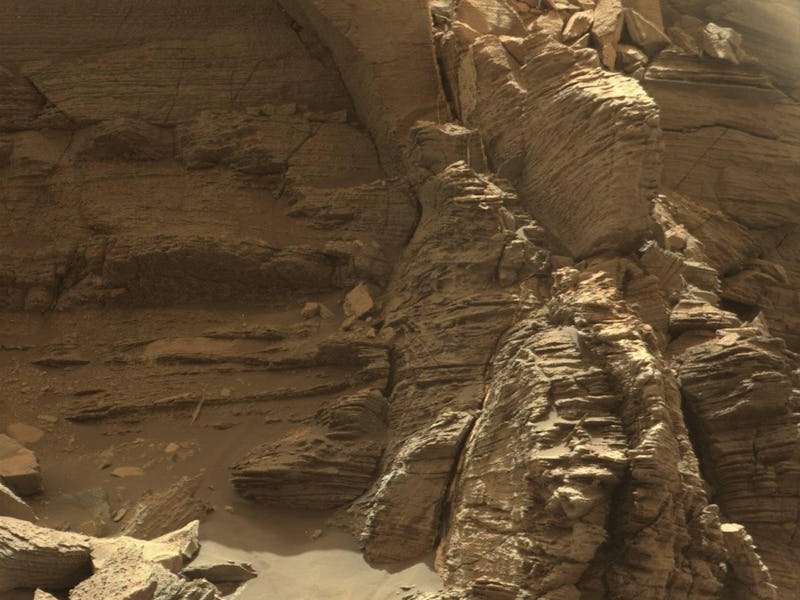NASA is seriously feeling itself with its description of the latest images from its Curiosity Mars Rover. In describing these photos, taken by the rover on September 8 during its exploration of the Murray Buttes on Mars, NASA writes, “The new images arguably rival photos taken in U.S. National Parks.” Come on NASA, don’t weasel out on this. Who’s arguing this? Just come right out and say, “Our photos from Mars are way better than any crap you can find in any national park, and the National Parks Service damn well knows it.” There, much better.
All that said, these buttes do provide a little more intriguing insight into the geology of Mars. These are sandstone formations that were eroded over time. While the higher elevations were likely shaped by wind, the lower portions of the buttes and mesas may well have been eroded by water. Ancient lakes were likely a major part of what helped shape the formations we see today, a couple billion years after they dried up.
Perhaps what’s most remarkable about that is how, well, unremarkable it is. At this point, NASA barely even bothers mentioning the role of ancient lakes or groundwater in forming these particular rocks because it’s no longer a big discovery that water played a major role in Mars’ history. Curiosity already helped establish in the first couple years of its mission not only the existence of ancient bodies of water but also that they could have supported microbial life.
NASA plans to take still more of these images collected by the rover and assemble them into a big mosaic. Here’s their update on Curiosity’s travels and where it’s headed next:
The new images represent Curiosity’s last stop in the Murray Buttes, where the rover has been driving for just over one month. As of this week, Curiosity has exited these buttes toward the south, driving up to the base of the final butte on its way out. In this location, the rover began its latest drilling campaign (on Sept. 9). After this drilling is completed, Curiosity will continue farther south and higher up Mount Sharp, leaving behind these spectacular formations.
For more, including additional awesome images, check out the NASA site.
